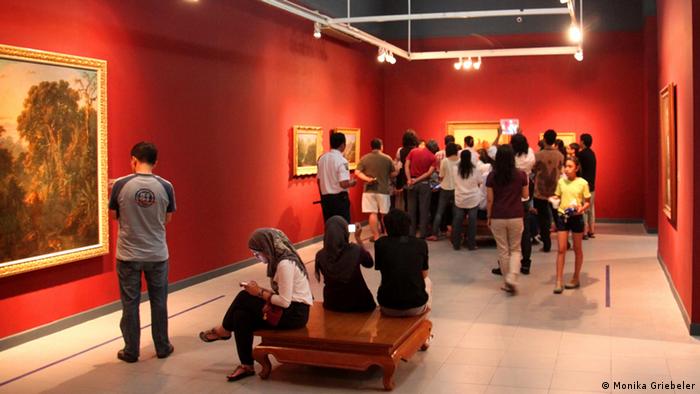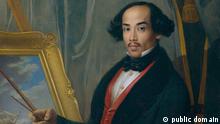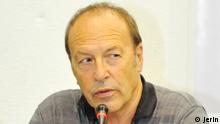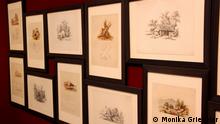此文初稿以Wikipedia 的Sir Nikolaus Pevsner 條目的英文和日文版本為主(機械翻譯補助),再加上我自己的一些補充。
Sir Nikolaus Bernhard Leon Pevsner,
CBE,
FBA (30 January 1902 – 18 August 1983), was a German-born British scholar of
history of art and, especially, of history of architecture. He is best known for his 46-volume series of county-by-county guides,
The Buildings of England (1951–74), often simply referred to as "Pevsner".
尼古勞斯伯恩哈德·萊昂佩夫斯納爵士,CBE,FBA(1902年1月30日 - 1983年8月18日),出生於德國而歸化英國的藝術史學者,特別精通於建築史。他最有名的是46卷英國的建築物導遊系列( 依各郡別本,詳下文《英格蘭的建物》《蘇格蘭的建物》 《威爾斯的建物》 《愛爾蘭的建物》,初稿(1951年至1974年),這些通常簡稱為“佩夫斯納”。
本文 內容類別 Contents
1生活1 Life
2第二次世界大戰2 Second World War
3戰後3 Post-war
4著名的思想和理論4 Notable ideas and theories
5 著作5 Publications
6參考6 References
7進一步閱讀7 Further reading
7.1論文7.1 Papers
8外部鏈接8 External links
Life
The son of a Jewish fur trader, Nikolaus Pevsner was born in
Leipzig, Saxony. He studied
art history
at the Universities of Leipzig, Munich, Berlin, and Frankfurt/Main,
completing a PhD in 1924 on the baroque merchant houses of Leipzig.
[1]
In 1923 he married Carola ('Lola') Kurlbaum, the daughter of
distinguished Leipzig lawyer Alfred Kurlbaum. He worked as an assistant
keeper at the
Dresden Gallery
(1924–28). During this period he became interested in establishing the
supremacy of German modernist architecture after visiting
Le Corbusier's Pavillon de l'Esprit Nouveau at the
Paris Exhibition of 1925.
[2] In 1928 he contributed the volume on Italian baroque painting to the
Handbuch der Kunstwissenschaft, a multi-volume series providing an overview of the history of European art. He taught at the
University of Göttingen (1929–33), offering a specialist course on English art and architecture.
According to Stephen Games's biography and an earlier summary in Games's introduction to
Pevsner on Art and Architecture: the Radio Talks,
[2][3]
Pevsner welcomed many of the economic and cultural policies of the
early Hitler regime, but was caught up in the ban on Jews being employed
by the Nazi state shortly after Hitler's accession to power and was
required to step down from Göttingen in autumn 1933. Later that year he
moved to England. His first post was an eighteen-month research
fellowship at the
University of Birmingham, found for him by friends in Birmingham and partly funded by the
Academic Assistance Council.
[4]
A study of the role of the designer in the industrial process, the
research produced a generally critical account of design standards in
Britain which he published as
An Enquiry into Industrial Art in England (Cambridge University Press, 1937). He was subsequently employed as a buyer of modern textiles, glass and ceramics for the
Gordon Russell furniture showrooms in London.
By this time he had also completed
Pioneers of the Modern Movement: from William Morris to Walter Gropius, his influential account of the pre-history of what he saw as
Walter Gropius's dominance of contemporary design.
Pioneers
ardently championed Gropius's first two buildings (both pre-First World
War) on the grounds that they summed up all the essential goals of
twentieth-century architecture; in England, however, it was widely taken
to be the history of England's contribution to international modernism,
and a manifesto for
Bauhaus (i.e.
Weimar) modernism, which it was not. This false view of it has long been institutionalised and almost as long been challenged.
[citation needed]
In spite of that, the book remains an important point of reference in
the teaching of the history of modern design, and helped lay the
foundation of Pevsner's career in England as an architectural historian.
Since its first publication by
Faber & Faber
in 1936, it has gone through several editions and been translated into
many languages. The English-language edition has also been renamed
Pioneers of Modern Design.
一生
尼古勞斯佩夫斯納出生於萊比錫,薩克森州,為猶太皮草商的兒子。他曾就讀於萊比錫,慕尼黑,柏林,法蘭克福( Main 河)大學,1924年完成《
在萊比錫的巴洛克式商人房子》
,取得藝術史博士學位。[1] 1923年,他與萊比錫的傑出律師Alfred Kurlbaum
的女兒 Carola ('Lola
“ 又稱為"蘿拉') Kurlbaum
結婚。他曾在德累斯頓畫廊當自願服務助理館員(1924年至1928年)。在此期間,他在1925年參訪巴黎展覽會上的柯布西耶作品Pavillon de l'Esprit Nouveau
之後,興致勃勃地想建立德國現代主義建築為當代之最的學說。[2]在1928年,他歐洲藝術史概觀的多卷系列《藝術研究手冊Handbuch DER Kunstwissenschaft》中撰《意大利巴洛克繪畫》卷。他曾任教於哥廷根大學(1929年至1933年),為藝術和建築專家提供了專業的英語課程。據 Stephen Games
撰寫的傳記和1他更早的《佩夫斯納論藝術與建築:電台廣播》的導論之摘要 ,佩夫斯納歡迎討論很多希特勒政權早期的經濟和文化政策,[2] [3],但在希特勒取得權力後不久頒發的禁聘用止猶太人之禁令之後被停播,1933年秋季他被強迫從強哥廷根離職。同一年晚些時候,他移居到英國。
他的第一個職位在英國伯明翰大學研究18個月,這筆研究獎學金,部分歸功於他在伯明翰的朋友的張羅,部分由英國的學術援助委員會的基金所資助。[4] 他研究設計師在工業過程中的作用,此一研究成果一般而重要,成為英國的設計標準,而他將之出版為《英國工業藝術的一番探究》 An Enquiry into Industrial Art in England (劍橋大學出版社,1937)。
隨後,他被倫敦的Gordon Russell 家具展廳聘為現代的紡織品,玻璃和陶瓷的採購代理。這個時候,他還完成了有影響力的《現代運動的先驅者:從威廉·莫里斯到格羅皮烏斯》 Pioneers of the Modern Movement: from William Morris to Walter Gropius,此書說明他認為的當代設計的領導者 Walter Gropius 在發跡之前的設計發展史
。 《現代運動的先驅者:從威廉·莫里斯到格羅皮烏斯》熱烈地強調格羅皮烏斯的2棟一戰前的建築,他認為它們總結出了所有的二十世紀建築的基本目標;然而,在英國,人們普遍認為他們才是國際的現代主義之貢獻者,而不是包豪斯(在魏瑪)的現代主義宣言。此種現代主義發源於英國的看法,早已在英國制度化,雖然懷疑之,不以為然的人也不少。[需要引文出處] 儘管如此,這本書仍然是現代設計史教學的重要參考文獻,並幫助佩夫斯納成為英國的專業建築歷史學家的生涯奠定基礎。該書自1936年首次由 Faber
& Fabe公司出版以來,已多次再版,被譯成多種文字。英文版的書名也改成《現代設計的先驅》。
Second World War
In 1940, Pevsner was interned as an enemy alien in Huyton,
Liverpool, despite having been included in the Nazi
Black Book as hostile to the Hitler regime. He was released after three months on the intervention of, among others,
Frank Pick, then Director-General of the Ministry of Information. He spent some time in the months after
the Blitz clearing bomb debris, and wrote reviews and art criticism for the Ministry of Information's
Die Zeitung, an anti-Nazi publication for Germans living in England. He also completed for
Penguin Books the Pelican paperback
An Outline of European Architecture, which he had begun to develop while in internment.
Outline would eventually go into seven editions, be translated into sixteen languages, and sell more than half a million copies.
In 1942 Pevsner finally secured two regular positions. From 1936 onwards he had been a frequent contributor to the
Architectural Review and from 1943 to 1945 he stood in as its acting editor while the regular editor
J.M. Richards
was on active service. Under the AR's influence, Pevsner's approach to
modern architecture became more complex and more moderate.
[5] Early signs of a lifelong interest in Victorian architecture, also influenced by the
Architectural Review,
appeared in a series written under the pseudonym of "Peter F.R.
Donner": Pevsner's "Treasure Hunts" guided readers down selected London
streets, pointing out architectural treasures of the nineteenth century.
He was also closely involved with the
Review's proprietor, Hubert de Cronin Hastings,
[6] in evolving the magazine's theories on
Picturesque planning.
[7]
In 1942 Pevsner was also appointed a part-time lecturer at
Birkbeck, University of London;
he would eventually retire from the college in 1969 as its first
professor of art history. He lectured at Cambridge for almost thirty
years, having been
Slade professor there for a record six years from 1949 to 1955, and would also hold the Slade professorship at Oxford in 1968.
Framing all this was his career as a writer and editor. After moving
to England, Pevsner had found that the study of architectural history
had little status in academic circles, and the amount of information
available, especially to travellers wanting to inform themselves about
the architecture of a particular district, was limited. Invited by
Allen Lane, founder of Penguin Books, for whom he had written his
Outline and also edited the King Penguin series,
[8]
to suggest ideas for future publications, he proposed a series of
comprehensive county guides to rectify this shortcoming. Work on the
Buildings of England
series began in 1945, and the first volume was published in 1951.
Pevsner wrote 32 of the books himself and 10 with collaborators, with a
further 4 of the original series written by others. Since his death,
work has continued on the series, which has been extended to cover the
rest of the United Kingdom, under the title
Pevsner Architectural Guides (now published by Yale University Press).
[9]
As well as The Buildings of England, Pevsner also proposed to Penguin
the Pelican History of Art series (1953– ), a multi-volume survey on the
model of the German
Handbuch der Kunstwissenschaft, which he would himself edit. Many individual volumes are regarded as classics.
第二次世界大戰
在1940年,儘管佩夫斯納已列為納粹希特勒政權的敵對者的黑皮書Black Book ,他仍被以敵國人在
利物浦的
Huyton島隔離起來
。三個月後,他被釋放了
,這是多方的干預結果,其中包括弗蘭克·匹克,當時情報部的局長。在德國的倫敦大突擊轟炸之後幾個月,他花些時間幫助清理炸後殘局,並為情報部為居英德國人出版的反納粹出版物 Die Zeitung 寫些評論文章。他還完成了《歐州建築史大綱》(An Outline of European Architecture),由企鵝圖書公司的鵜鶘版平裝書出版,這本書是他在被隔離時開始構思的。這本書後來出版七個版本,被翻譯成16種語言,銷售量超過50萬冊。
佩夫斯納在1942年終於獲得了兩個常規的位置。從1936年起,他一直頻繁貢獻者建築評論,並從1943年到1945年,他站在作為其行事的編輯,同時定期編輯JM理查茲現役。該受體的影響下,佩夫斯納的現代建築方法變得更複雜和更溫和。[5]早期跡象1的維多利亞式建築的終身興趣,還“建築評論的影響,出現了一系列假名”彼得的FR唐納下編寫“:佩夫斯納的”尋寶“,引導讀者向下選擇倫敦的街道,並指出在十九世紀的建築瑰寶。他還密切參與審查的老闆,黑斯廷斯,休伯特·克羅寧[6]在風景如畫的規劃發展“雜誌的理論。[7]
佩夫斯納在1942年被委任在倫敦大學伯克貝克,兼職講師,他最終會在1969年從大學藝術史教授作為其退休。他在劍橋演講,在將近30年,曾斯萊德教授為創紀錄的6年,從1949年到1955年,也將在1968年在牛津大學舉行斯萊德教授。
框架這一切是他作為一個作家和編輯的職業生涯。佩夫斯納轉移到英格蘭後,已發現的建築史的研究,很少有學術界的地位,提供的信息量,特別是旅客想了解某一地區的建築,是有限的。由企鵝出版社創始人艾倫巷,邀請,其中他寫了他的大綱,還編輯了企鵝國王系列,[8]建議未來出版物的想法,他提出了一系列全面的縣指導,以糾正這個缺點。英格蘭系列建築物上的工作始於1945年,並於1951年出版第一冊。佩夫斯納與合作者寫了32自己的書籍和10日,一個由別人寫的原系列的另外4。自從他死後,繼續工作系列,已經擴展到覆蓋英國的其餘部分的標題下佩夫斯納建築指南,(現在由耶魯大學出版社出版)。[9]以及英國的建築物,佩夫斯納也提出了企鵝系列鵜鶘藝術史(1953 - ),Handbuch DER Kunstwissenschaft德國模式對多卷調查,他將自己編輯。許多個別卷被視為經典。
Post-war
In 1946 Pevsner made the first of several broadcasts on the
BBC Third Programme,
presenting nine talks in all up to 1950, examining painters and
European art eras. By 1977 he had presented 78 talks for the BBC
including the
Reith Lectures in 1955 – a series of six broadcasts, titled
The Englishness of English Art,
[10]
for which he explored the qualities of art which he regarded as
particularly English, and what they said about the English national
character.
[11] His A.W. Mellon Lectures in Fine Art at the
National Gallery of Art, Washington, D.C., were published in 1976 as
A History of Building Types.
Pevsner was a founding member in 1957 of
The Victorian Society,
the national charity for the study and protection of Victorian and
Edwardian architecture and other arts. In 1964 he was invited to become
its chairman, and steered it through its formative years, fighting
alongside
John Betjeman,
Hugh Casson
and others to save houses, churches, railway stations and other
monuments of the Victorian age. He served for ten years (1960–70) as a
member of the National Advisory Council on Art Education (or Coldstream
Committee), campaigning for art history to be a compulsory element in
the curriculum of art schools. He was elected a Fellow of the
British Academy in 1965 and awarded the Gold Medal of the
Royal Institute of British Architects in 1967. Having assumed British citizenship in 1946, Pevsner was awarded a
CBE in 1953 and was knighted in 1969 'for services to art and architecture'.
Lola Pevsner died in 1963. Pevsner himself died in London in August 1983 and his memorial service was held at the
Church of Christ the King, Bloomsbury the following December, with the memorial address being given by
Alec Clifton-Taylor, a friend of fifty years. He is buried in the churchyard of St Peter,
Clyffe Pypard in Wiltshire.
戰後
在1946年,佩夫斯納開始在BBC第三套節目廣播,談論畫家和歐洲藝術時代,到1950年,他已到BBC談過九次。到1977年,他在BBC作過78次廣播,包括在1955年的 Reith講座,它為 六次系列廣播節目,題為The Englishness of English Art “英國藝術的獨特性", 他探討那些藝術素質最富英國民族特色,以及它們表現出什麼英國性格。他在華盛頓的國家美術館的A.W. Mellon
藝術史講座的演講,1976年出版,書名為 A History of Building Types 一部
建築類型史。
佩夫斯納為維多利亞時代學會的創始成員(1957年),該會為全國慈善機構,旨在研究並保護維多利亞時期和愛德華時期的建築和其他藝術。在1964年,他受邀為該會董事長,帶領它渡過成長期,與約翰 Betjeman,休·卡森和其他人並肩戰鬥,以拯救維多利亞時代的許多房屋,教堂,火車站和其他的紀念碑為受保護的古蹟。他擔任過十年的全國藝術教育(或科爾德斯特里姆委員會)諮詢委員會的成員(1960至1970年),鼓吹藝術史為各藝術學校的的必修課程。1965年他被選為英國科學院院士,並在1967年獲得英國皇家建築師學會的金獎。佩夫斯納1946年取得英國公民身份,1953年以他對藝術和建築服務而被授予CBE,並於1969年封爵。
夫人
蘿拉 佩夫斯納於1963年去世。佩夫斯納在1983年8月逝世於倫敦, 他的紀念追悼會在同年的12月布盧姆斯伯的基督國王教會舉行,由其五十多年的老友亞歷克·克利夫頓 - 泰勒發表
紀念演說。他被安葬在威爾特郡的Clyffe Pypard 的聖彼得教堂的墓地。
Notable ideas and theories
- "A bicycle shed is a building; Lincoln Cathedral
is a piece of architecture. Nearly everything that encloses space on a
scale sufficient for a human being to move in is a building; the term
architecture applies only to buildings designed with a view to aesthetic
appeal." From An Outline of European Architecture, 1943.
- Pevsner also described the three ways aesthetic appeal could
manifest itself in architecture: in a building's façade, the material
volumes, or the interior.
著名的文章段落
“一個自行車棚是建物;而林肯大教堂則是一棟建築。幾乎所規模足以讓人移動的封閉空間都是建築物。 該建物的設計具有審美情趣的,才足以用"建築"這字眼。"《歐州建築史大綱》(An Outline of European Architecture) 第一段
佩夫斯納還介紹了可以在建築本身體現審美情趣的三種方式:在建築物的外牆,材料份量,或內部。
サー・
ニコラウス・ペヴズナー(Sir
Nikolaus Pevsner,
1902年1月30日 -
1983年8月18日)は
ドイツ出身の
イギリスの美術史家。姓は
ペフスナーとの表記もある。イギリス・ペリカンブック社にて雑誌・叢書の監修・執筆を数多く行い、モダンデザイン分野の歴史理論的骨格を築いた。
生涯 [編集]
ユダヤ系の商人の子として
ライプツィヒに生まれる。ライプツィヒ、
ミュンヘン、
ベルリン、
フランクフルトの大学で
美術史(芸術史)を学び、1924年から1928年までドレスデン・ギャラリー、1929年から1933年まで
ゲッティンゲン大学につとめる。
1934年、
ナチスの蛮行を避けて
イングランドへ移住。
1946年、イギリスの市民となる。
1944年から1969年まで
ロンドン大学教授。1949年から1955年まで
ケンブリッジ大学の教授を兼任した。
1953年からの "Pelican History of Art" シリーズ発行を主幹した。
1967年、
RIBAゴールドメダル受賞。
1969年、
ナイトの称号を授与。1983年、
ロンドンで没する。
伝記の案内黑體字似表示有日譯本 黃體字表示我有/讀過
An Enquiry into Industrial Art in England (Cambridge University Press, 1937).
- Academies of Art, Past and Present (1940)
- An Outline of European Architecture (1942/3)
- Pioneers of Modern Design (1949; originally published in 1936 under the title Pioneers of the Modern Movement)
- The Buildings of England (1951-74)
- The Englishness of English Art (1956)
- The Sources of Modern Architecture and Design (1968)
- "'A History of Building Types" (1976)
- Academies of Art, Past and Present (1940)
- An Outline of European Architecture (1943)
- The Leaves Of Southwell (King Penguin series), Penguin, 1945此書似為日文所忽略
- Pioneers of Modern Design (1949; originally published in 1936 under the title Pioneers of the Modern Movement)
- The Buildings of England (1951–74) 詳下特別類.
- The Englishness of English Art (1955, BBC Reith Lectures)
- The Englishness of English Art (1956, print edition)
- The Sources of Modern Architecture and Design (1968)
- A History of Building Types (1976)
著作
- "Barockmalerei in dem romanischen Ländern" (1928年)
- "High Victorian design" (1951年)
- "Die italienische Malerei vom Ende der Renaissance bis zum ausgehenden Rokoko" (1928-32年)
- "Dictionary of architecture" (1966年) (J. Fleming, H, Honour と共著)
イギリスの建築物について [編集]The Buildings of England (1951–74)
《英格蘭的建物》
- Bath (2003) (Michael Forsyth)
- Bedfordshire, Huntingdon & Peterborough (1968)
- Berkshire (1966)
- Buckinghamshire (1960;1994) (rev. Elizabeth Williamson)
- Cambridgeshire (1954;1970)
- Cheshire (1971) (with Edward Hubbard)
- Cornwall (1951;1970)
- County Durham (1953;1983) (rev. Elizabeth Williamson)
- Cumberland & Westmorland (1967)
- Derbyshire (1953;1978) (rev. Elizabeth Williamson)
- Devon (1952;1989)
- Dorset (1972) (with John Newman)
- Essex (1954;1965) (rev. Enid Radcliffe)
- Gloucestershire: The Cotswolds (1970;1999) (David Verey, rev. Alan Brooks)
- Gloucestershire: The Vale & Forest of Dean (2002) (David Verey, rev. Alan Brooks)
- Hampshire & The Isle of Wight (1967) (with David Lloyd)
- Herefordshire (1963)
- Hertfordshire (1953;1977) (rev. Bridget Cherry)
- Kent: North East & East (1969;1983) (John Newman)
- Kent: West & the Weald (1969;1976) (John Newman)
- Lancashire: Manchester & the South-East (2004) ISBN 0300105835 (with Clare Hartwell and Matthew Hyde)
- North Lancashire (1969)
- South Lancashire (1969)
- Leicestershire & Rutland (1960;1984) (rev. Elizabeth Williamson)
- Lincolnshire (1964;1989) (with John Harris, rev. Nicholas Antram)
- Liverpool (2003) (Joseph Sharples)
- London 1: The City of London (1997) ISBN 0300096240 (with Simon Bradley)
- London 2: South (1983) ISBN 0300096518 (with Bridget Cherry)
- London 3: North-West (1991) ISBN 0300096526 (with Bridget Cherry)
- London 4: North (1998) ISBN 0300096534 (with Bridget Cherry)
- London 5: East (2004) ISBN 0300107013 (with Bridget Cherry and Charles O'Brien)
- London 6: Westminster (2003) ISBN 0300095953 (with Simon Bradley)
- London City Churches (1998) (Simon Bradley)
- Manchester (2001) ISBN 0300096666 (Clare Hartwell)
- Norfolk 1: Norwich & North East (1962;1997) (rev. Bill Wilson)
- Norfolk 2: South & West (1962;1999) (rev. Bill Wilson)
- Northamptonshire (1961;1973) (rev. Bridget Cherry)
- Northumberland (1957;1992) (with Ian A. Richmond, rev. John Grundy, Grace McCombie, Peter Ryder and Humphrey Welfare)
- Nottinghamshire (1951;1979) (rev. Elizabeth Williamson)
- Oxfordshire (1974) (with Jennifer Sherwood)
- Shropshire (1958)
- Somerset: North & Bristol (1958)
- Somerset: South & West (1958)
- Staffordshire (1974)
- Suffolk (1961;1974) (rev. Enid Radcliffe)
- Surrey (1962;1971) (with Ian Nairn, rev. Bridget Cherry)
- Sussex (1965) (with Ian Nairn)
- Warwickshire (1966) (with Alexandra Wedgwood)
- Wiltshire (1963;1971) (rev. Bridget Cherry)
- Worcestershire (1968)
- Yorkshire: The North Riding (1966)
- Yorkshire: The West Riding (1959;1967) (rev. Enid Radcliffe)
- Yorkshire: York & East Riding (1972;1995) (rev. David Neave)
スコットランドの建築について [編集]
《蘇格蘭的建物》
The series continued under Pevsner's name into Scotland. The series is not yet complete.
- Aberdeenshire and North-East (in preparation)
- Argyll and Bute (2000) ISBN 0300096704 (Frank Arneil Walker)
- Ayrshire (in preparation)
- Borders (2005) ISBN 0300107021 (Kitty Cruft, John Dunbar and Richard Fawcett)
- Dumfries and Galloway (1996) (ISBN 0300096712) (John Gifford)
- Dundee and Angus (in preparation)
- Edinburgh (1984) ISBN 0300096720 (John Gifford, Colin McWilliam and David Walker)
- Fife (1988) ISBN 0300096739 (John Gifford)
- Glasgow (1990) ISBN 0300096747 (Elizabeth Williamson, Anne Riches and Malcolm Higgs)
- Highlands and Islands (1992) ISBN 0300096259 (John Gifford)
- Lothian, except Edinburgh (1978) (ISBN 0300096267 (Colin McWilliam)
- Perth and Kinross (in preparation)
- Renfrewshire and Lanarkshire (in preparation)
- Stirling and Central Scotland (2002) ISBN 0300095945 (John Gifford and Frank Arneil Walker)
ウェールズの建築について [編集]
《威爾斯的建物》
アイルランドの建築について [編集]
《愛爾蘭的建物》
- Dublin 「ダブリン」 (2005) (Christine Casey)
- North-West Ulster: the Counties of Londonderry, Donegal, Fermanagh & Tyrone (1979) ISBN 0-300-09667-4 (Alistair Rowan)
- North Leinster 「北レンスター」 (1993) ISBN 0-300-09668-2 (Alistair Rowan and Christine Casey)
Books
Pevsner on art and architecture


 A self-portrait of the artist
A self-portrait of the artist Werner Kraus published a biography of Raden Saleh in 2004A
Werner Kraus published a biography of Raden Saleh in 2004A Pictures by schoolchildren inspired by Raden Saleh
Pictures by schoolchildren inspired by Raden Saleh